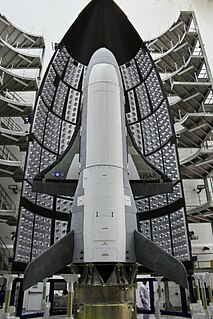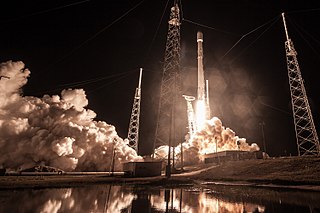 W
WGPS Block III consists of the first ten GPS III satellites, which will be used to keep the Navstar Global Positioning System operational. Lockheed Martin designed, developed and manufactured the GPS III Non-Flight Satellite Testbed (GNST) and all ten Block III satellites. The first satellite in the series was launched in December 2018. The tenth and final GPS Block III launch is projected in 2023.
 W
WThis is a list of NRO Launch (NROL) designations, i.e. satellites operated by the United States National Reconnaissance Office. Those missions are generally classified, so that their exact purposes and orbital elements are not published. However, amateur astronomers have managed to observe most of the satellites, and leaked information has led to the identification of many of the payloads.
 W
WPaz is a Spanish Earth observation and reconnaissance satellite launched on 22 February 2018. It is Spain's first spy satellite. The satellite is operated by Hisdesat. Paz was previously referred to as SEOSAR.
 W
WUSA-289, also known as GPS-III SV01 or Vespucci, is an United States navigation satellite which forms part of the Global Positioning System. It was the first GPS Block III satellite to be launched.
 W
WUSA-304, also known as GPS-III SV03 or Matthew Henson, is a United States navigation satellite which forms part of the Global Positioning System. It was the third GPS Block III satellite to be launched.
 W
WUSA-309, also known as GPS-III SV04 or Sacagawea, is a United States navigation satellite which forms part of the Global Positioning System. It was the fourth GPS Block III satellite to be launched.
 W
WThe Boeing X-37, also known as the Orbital Test Vehicle (OTV), is a reusable robotic spacecraft. It is boosted into space by a launch vehicle, then re-enters Earth's atmosphere and lands as a spaceplane. The X-37 is operated by the United States Space Force, and was previously operated by Air Force Space Command until 2019 for orbital spaceflight missions intended to demonstrate reusable space technologies. It is a 120-percent-scaled derivative of the earlier Boeing X-40. The X-37 began as a NASA project in 1999, before being transferred to the United States Department of Defense in 2004.
 W
WUSA-280 was a classified United States government satellite that was launched by SpaceX on 8 January 2018. The specific agency in charge of the Zuma project has not been disclosed, nor its purpose. In November 2017, Northrop Grumman stated that the launch "is a monumental responsibility and has taken great care to ensure the most affordable and lowest risk scenario for Zuma." The Wall Street Journal reported that the design was very sensitive to vibration and sudden shocks, and had a development cost approaching US$3.5 billion.